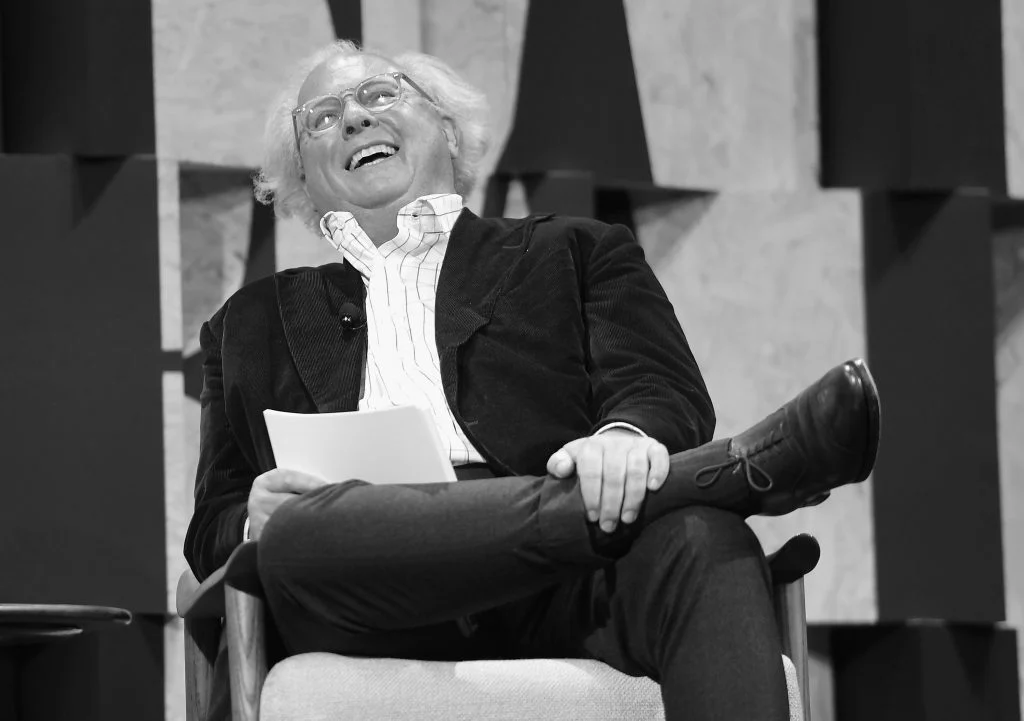New York: Graydon Carter, the former Vanity Fair editor who held the helm for 25 years until his departure in 2017, has released his highly anticipated memoir titled When the Going Was Good: An Editor’s Adventures During the Last Golden Age of Magazines. The memoir offers a treasure trove of anecdotes and behind-the-scenes insights into the art, fashion, and media worlds during a time when glossy magazines reigned supreme.
Memorable Tales and Missed Opportunities
Carter’s memoir is packed with fascinating stories, some of which reveal missed opportunities that have haunted even the most seasoned taste-makers. One particularly striking story recounts how Carter passed on a Keith Haring painting in the late 1970s. At the time, art dealer Annie Plumb offered him a still-wet canvas by Haring, but Carter admits, “I was so out of it, I really didn’t know what his art looked like. When Annie showed me, I just didn’t get it. ‘I could do that myself,’ was my reply.”
A Surprising Role in Donald Trump’s Rise
Carter also recounts an unexpected connection to the rise of Donald J. Trump. In the early 1980s, Carter wrote an unflattering profile of Trump for GQ, which led Trump’s team to buy up numerous copies of the issue to limit public access. The brisk sales of the magazine caught the attention of S.I. Newhouse, the chairman of Condé Nast. Newhouse subsequently urged Random House, then owned by Condé Nast, to publish Trump’s book The Art of the Deal in 1987. Carter reflects, “As they say, a butterfly’s wings.” This pivotal moment arguably helped catapult Trump into the limelight, eventually paving the way for his reality TV career and later, his presidency.
Adrien Brody’s Artistic Roots
In a lesser-known anecdote, Carter shares a connection between Adrien Brody and the art world. Brody’s artistic sensibilities, he reveals, stem from his mother, Sylvia Plachy, a renowned photographer who worked extensively for the Village Voice. Plachy once shot a photo essay for Spy Magazine, co-founded by Carter, showcasing what New York nightclubs looked like in the early morning hours. Carter humorously recalls Brody’s antics at an Oscars party where he attempted to steal electric lamps.
Insider Tips on Gala Planning and Social Etiquette
Carter’s expertise in social dynamics is evident in his detailed advice on gala planning. He suggests using double-sided name cards to assist guests with names, and he highlights the European practice of seating husbands and wives at separate tables to encourage post-dinner gossip. He also reveals a golden rule for seating arrangements: “male-female-male-female.” His insights into Vanity Fair’s famous Oscars parties offer a glimpse into the meticulous attention paid to detail in these elite gatherings.
The High-Stakes World of the Met Gala and Museum Sponsorships
Carter delves into the complexities of sponsorships at high-profile events, such as the Met Gala, where fashion houses pay upwards of $350,000 for tables. He compares this practice to a “protection racket,” noting that buying a table does not guarantee favorable coverage in Vogue, but not buying one can certainly harm relationships with editors. Carter draws a parallel to the art world, where major galleries such as Hauser & Wirth often sponsor museum galas that conveniently end up honoring their artists.
Family Ties to the Auction World
Carter also highlights his son, Max Carter, who is a vice chairman at Christie’s. Max played a crucial role in overseeing the auction of the S.I. Newhouse collection, which fetched a staggering $178 million. This underscores the Carter family’s continued influence in both the art and media landscapes.
Fascinating Art World Anecdotes
One particularly intriguing anecdote recounts a dinner at David Geffen’s house in Los Angeles, where Carter dined with S.I. Newhouse. During the evening, they admired a Jackson Pollock painting that Geffen had acquired from Newhouse. However, a minor mystery emerged—Newhouse had displayed the painting vertically, while Geffen hung it horizontally. Carter does not offer a verdict on which orientation was correct, leaving the debate open.
Feuds and Unmentioned Drama
Though Carter avoids mentioning his long-standing feud with restaurateur Keith McNally, he frequently references his brother, Brian McNally, who is also a well-known figure in the restaurant world. Interestingly, Keith McNally’s own forthcoming memoir is expected to touch on his relationship with Carter, though he reportedly speaks kindly of him.
Connections to Damien Hirst and Michael Imlay
Another art-world connection involves Michael Imlay, the artist who hand-lettered Carter’s storyboard at Vanity Fair. Imlay also worked on some of Damien Hirst’s iconic spot paintings, showcasing how the worlds of fine art and media often intersected during Carter’s tenure.
Mapping the Hotspots of New York’s Past and Present
Carter offers a nostalgic tour of New York’s former hotspots, drawing comparisons to their modern-day equivalents. He suggests that:
- La Côte Basque is now Sant Ambroeus.
- Elaine’s has been replaced by Lucien.
- Canal Bar has morphed into Fanelli’s, despite the latter existing concurrently with the former.
- Lutèce finds its contemporary counterpart in Frenchette.
A Rich Tapestry of Media and Art History
When the Going Was Good is a captivating glimpse into a bygone era where art, media, and high society collided. Carter’s memoir not only recounts the dazzling highs of magazine publishing but also provides an insider’s perspective on the power players and cultural icons who shaped the art and media landscapes. With its witty, incisive prose and wealth of fascinating anecdotes, the book solidifies Carter’s reputation as one of the most influential chroniclers of 20th-century culture.



0 Comments